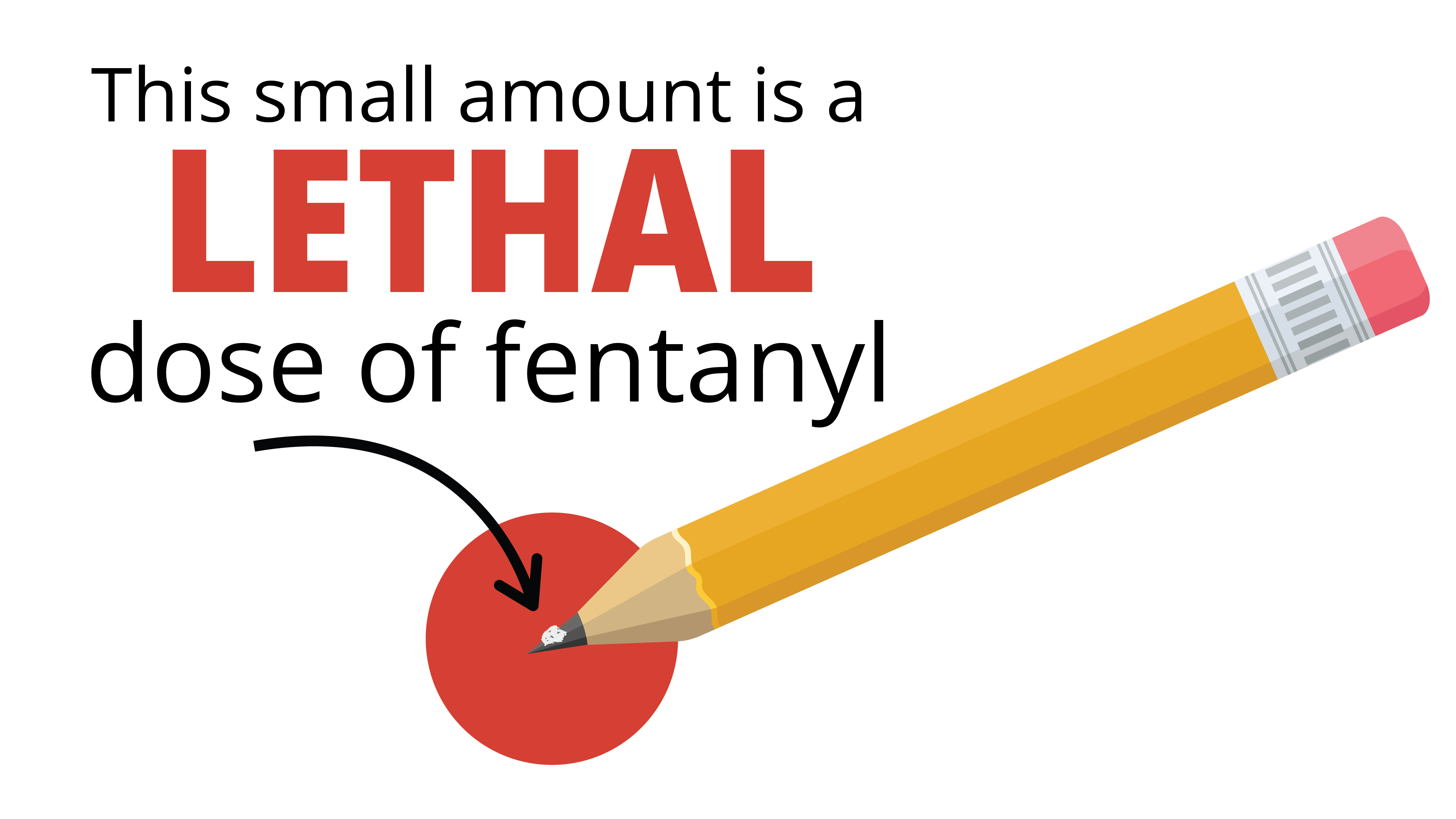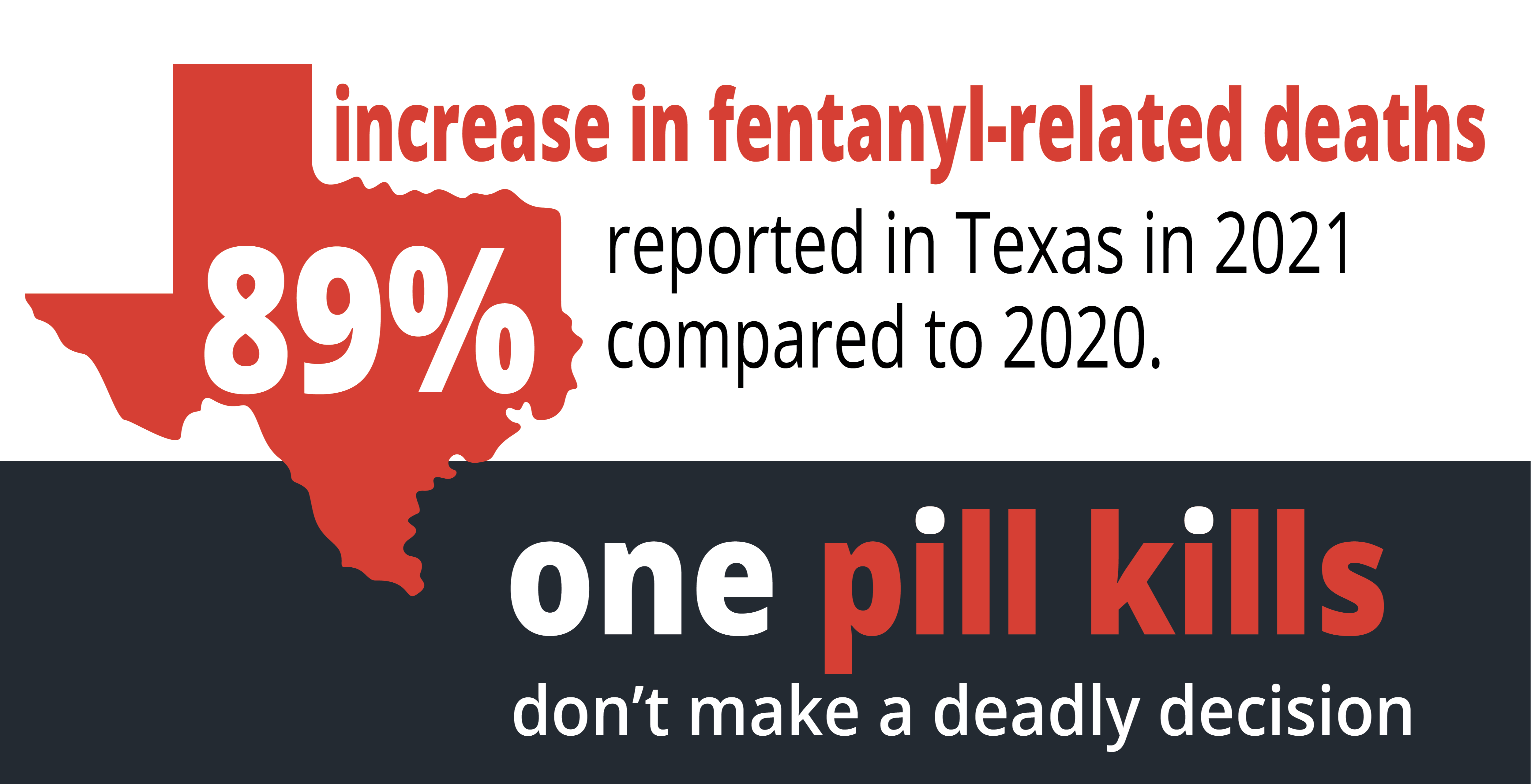
Fentanyl is a synthetic opioid that is up to 50 times stronger than heroin and 100 times stronger than morphine, often lethal with as little as 2 milligrams (equal to 10-15 grains of table salt). It is a major contributor to fatal and nonfatal overdoses in the U.S.
There are two types of fentanyl: pharmaceutical fentanyl and illicitly manufactured fentanyl. Both are considered synthetic opioids.
Most recent cases of fentanyl-related overdose are linked to illicitly manufactured fentanyl, which is distributed through illegal drug markets for its heroin-like effect. It is often added to other drugs because of its extreme potency, which makes drugs cheaper, more powerful, more addictive, and more dangerous.

FENTANYL
THE INVISIBLE KILLER
Drugs may contain a deadly level of fentanyl. You cannot see, taste, or smell it. It is almost impossible to tell if a drug is laced with fentanyl unless tested with a fentanyl testing strip.
"The only safe medications are ones that come from licensed and accredited medical professionals. DEA warns that pills purchased outside of a licensed pharmacy are illegal, dangerous, and potentially lethal."
Fentanyl Facts | DEA

What Tyler ISD is Doing
We have partnered with local law enforcement, emergency management, and health authorities to monitor and collaborate on the best way to combat the fentanyl crisis.
We stock Narcan at all campuses. Narcan, administered quickly enough, can help reverse the effects of a fentanyl overdose.
Our nursing staff, counselors, safety and security team, curriculum and instruction leaders, and our principals and campus leaders continue to work on in-school educational opportunities, which may include assemblies, posters, or other ways to inform students about fentanyl dangers.
We have an anonymous reporting tool, Safe2SpeakUP, where students and parents can report suspected fentanyl use.

Two milligrams of fentanyl, about 15 grains of salt, can kill an adult.
And, it is easily pressed into counterfeit pills that look like drugs taken to sleep or relax.
What You Can Do
To help fight the fentanyl problem, you can:
Talk to your children. Tell them that ANY pill they get from a friend or purchased online or off of the street could be a counterfeit pill containing fentanyl. Only take medication that was prescribed by a doctor, purchased at a pharmacy, and approved by parents or guardians.
Learn about the fentanyl crisis and help spread the word that this is a dangerous situation. Visit the Centers for Disease Control website’s Fentanyl Facts page as a starting-point.
Monitor your child's social media and app usage. This is a common way that children get access to this drug.
Encourage your child to get involved with extracurricular activities, church, service projects, and community and school organizations. Keeping your teen involved can help battle loneliness, isolation, and hopelessness.
Monitor your child’s behavior. Has their behavior changed lately? Do they have a new set of friends? Are they keeping to themselves more often than usual?
Report any suspicion that fentanyl use may be occurring in the schools or that someone may be abusing it. Encourage your child to do the same. You could save a life.
Ensure that your child delivers all medications, including over-the-counter medications, to the school nurse for distribution. Students should not carry any medications with them at school, nor share them for any reason.
Seek help if your child is facing a mental health challenge or if you suspect they are using any substance.

Signs of Overdose
Recognizing the signs of opioid overdose can save a life. Here are some things to look for:
Small, constricted “pinpoint pupils”
Falling asleep or losing consciousness
Slow, weak, or no breathing
Choking or gurgling sounds
Limp body
Cold and/or clammy skin
Discolored skin (especially in lips and nails)
What to do if You Think Someone is Overdosing
It may be hard to tell whether a person is high or experiencing an overdose. If you aren’t sure, treat it like an overdose—you could save a life.
Call 911 immediately.
Administer Narcan, if available.
Try to keep the person awake and breathing.
Lay the person on their side to prevent choking.
Stay with the person until emergency assistance arrives.
